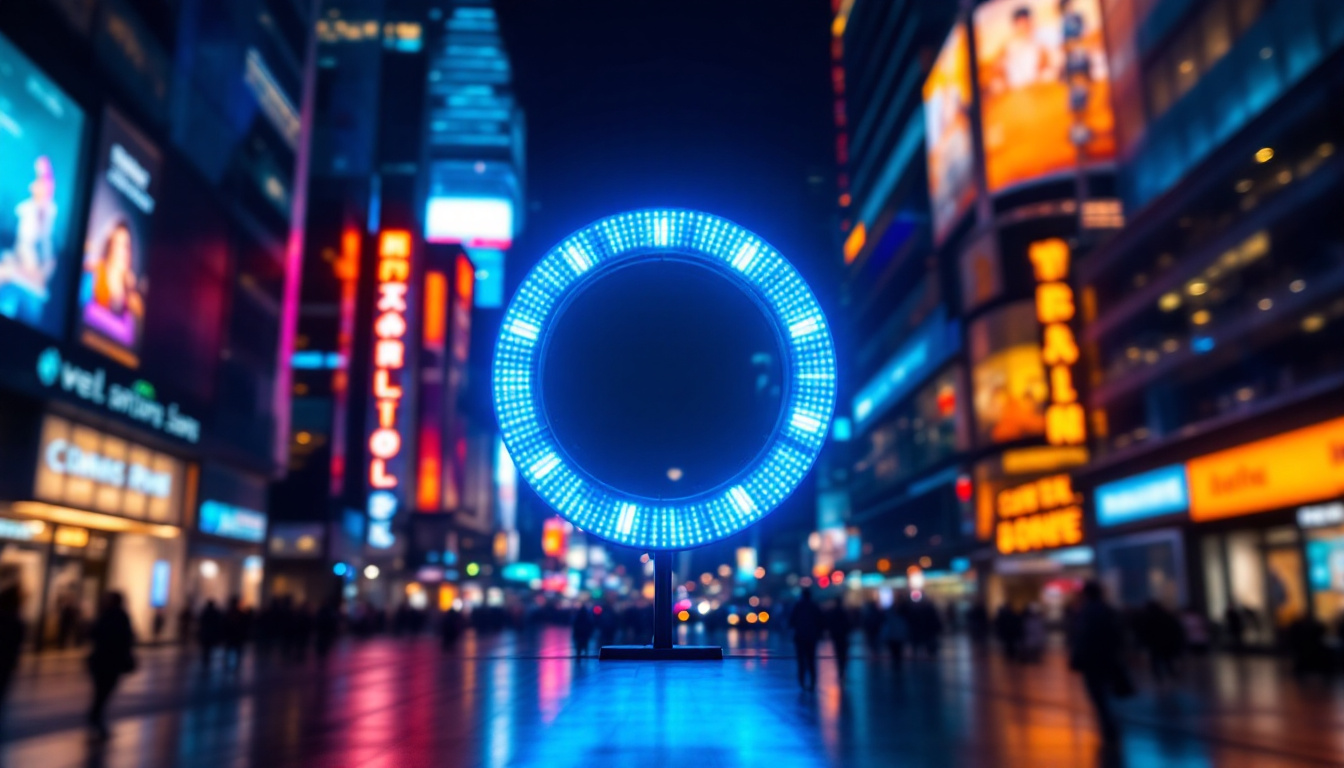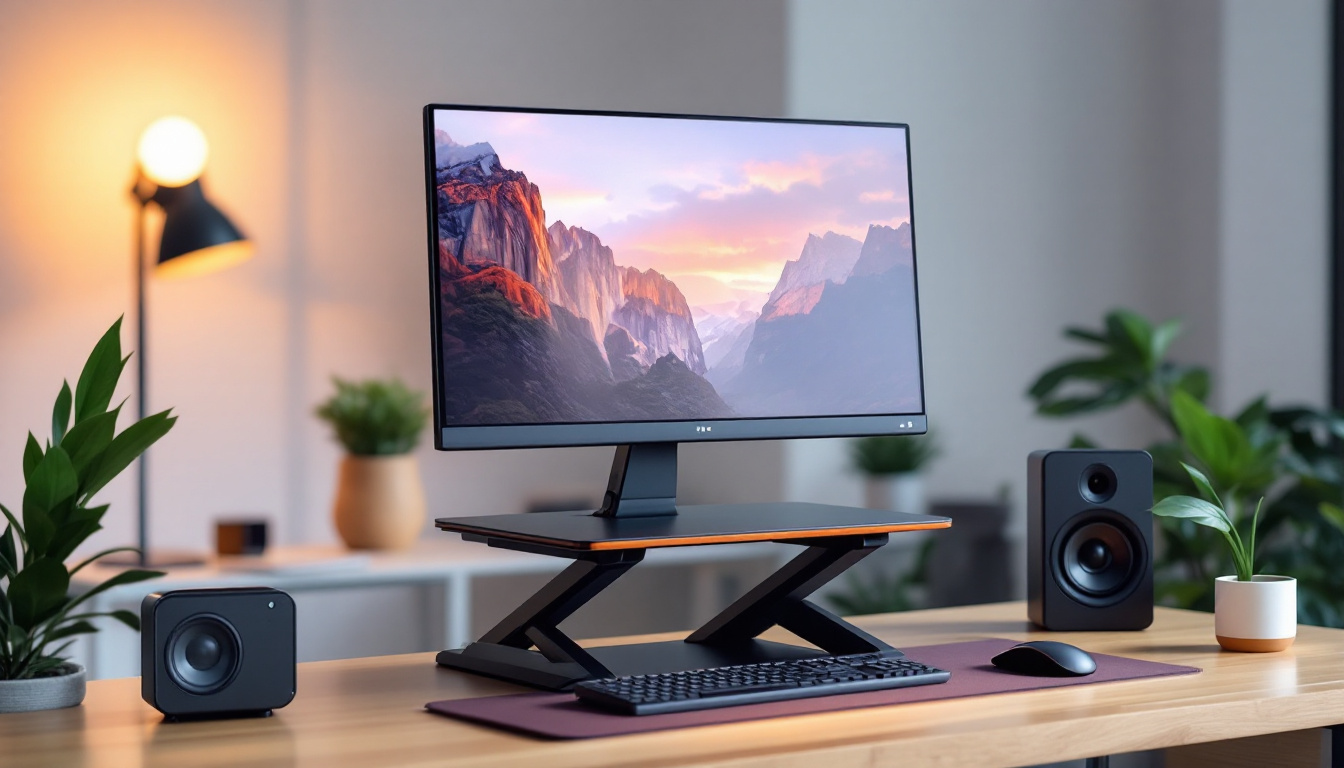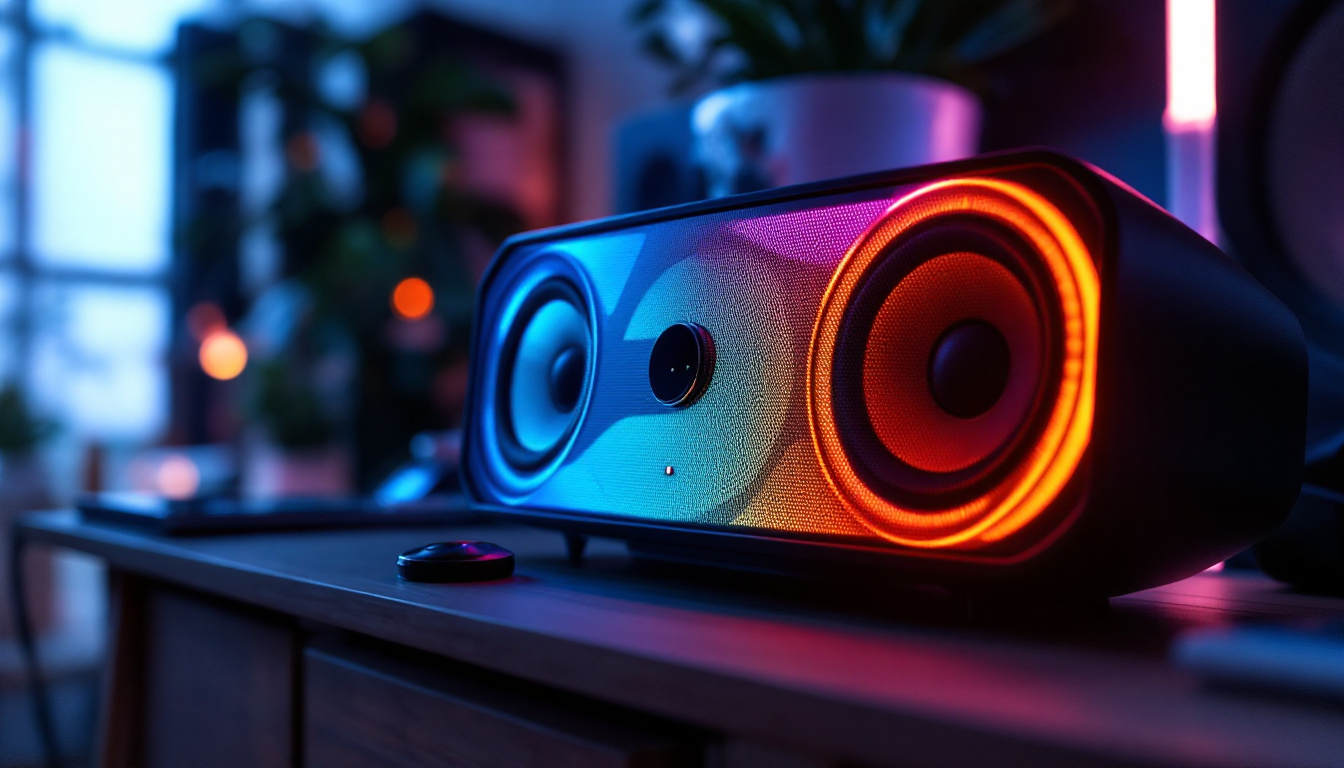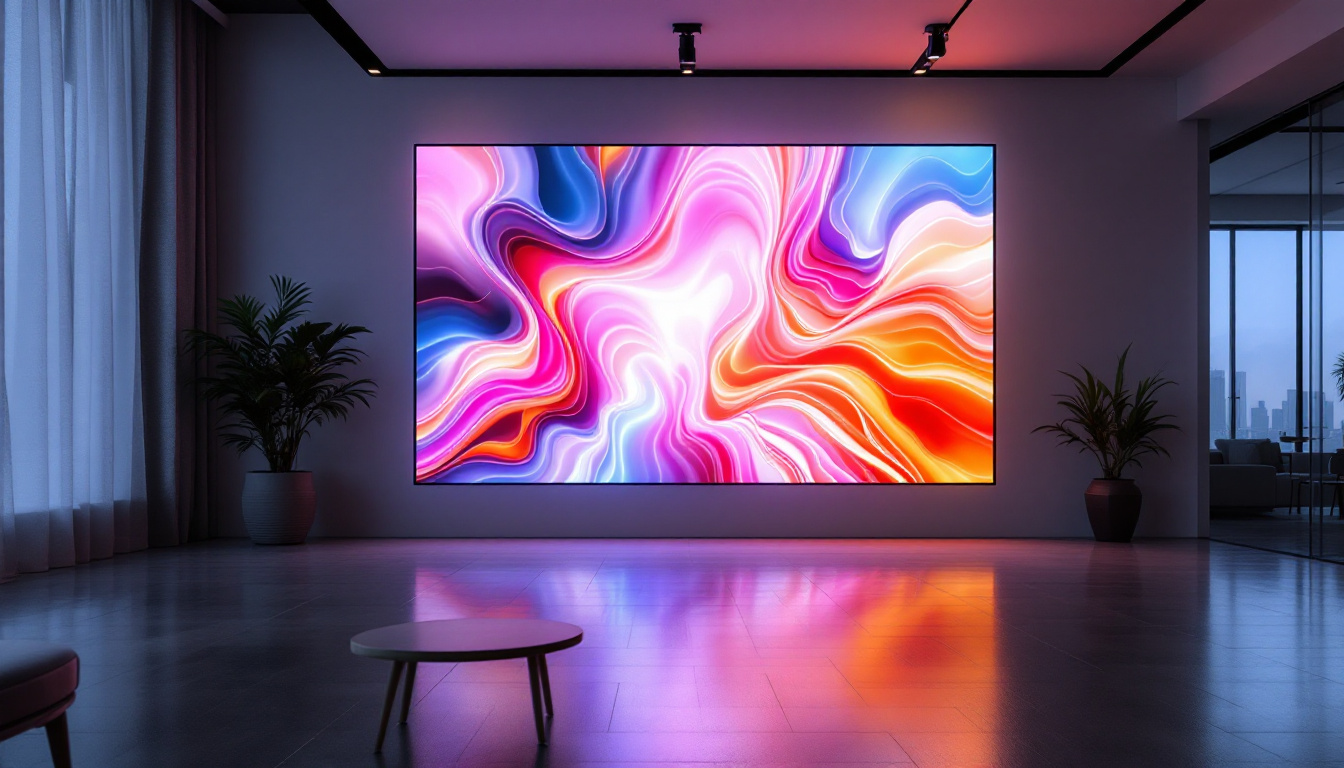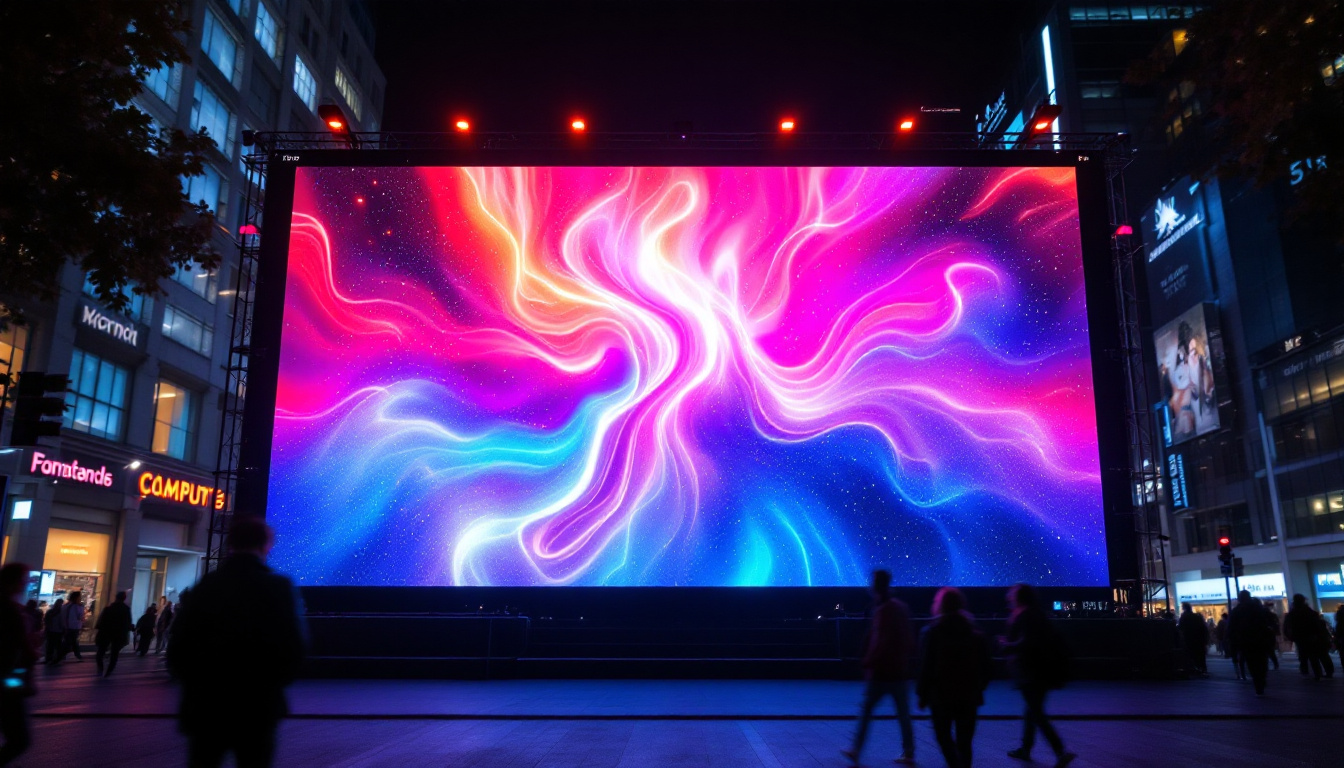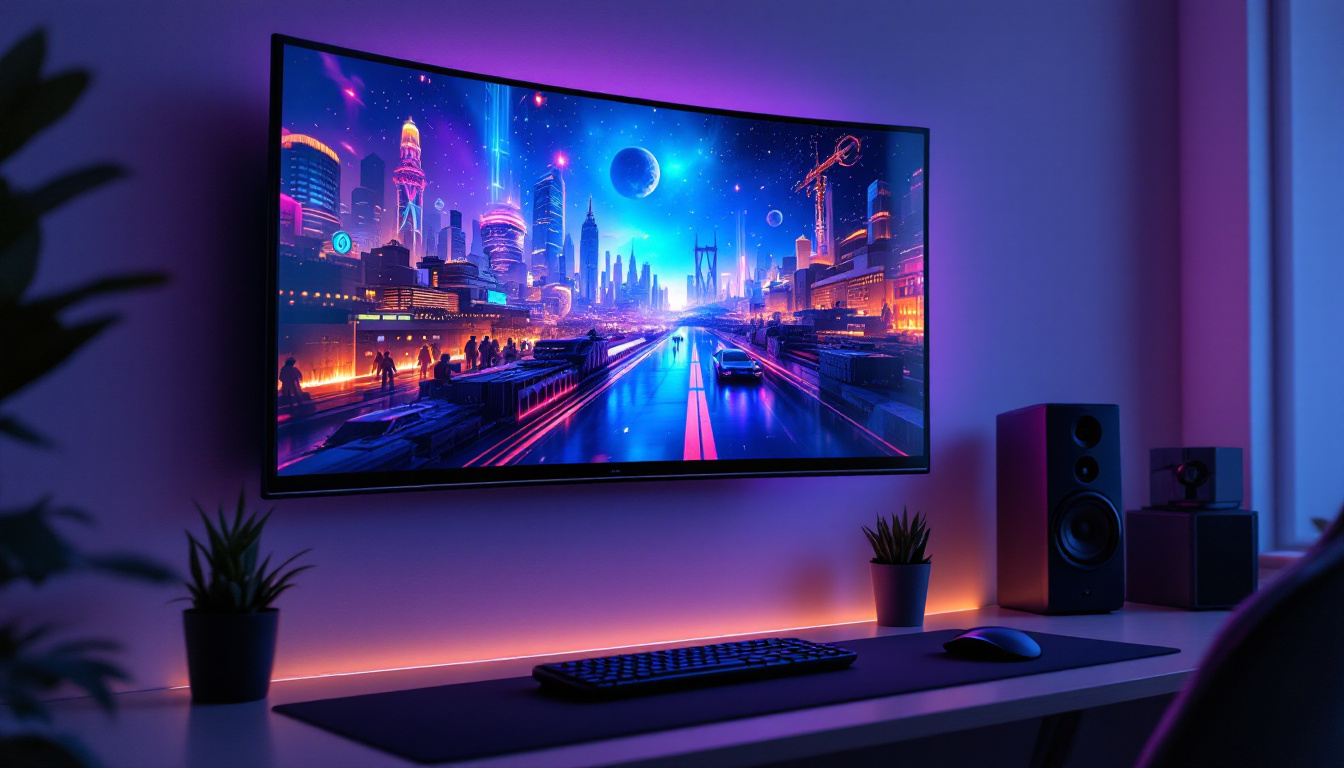In the realm of modern technology, high-end monitors have become essential tools for professionals, gamers, and casual users alike. Among the various display technologies available, LED (Light Emitting Diode) displays have risen to prominence due to their superior performance, energy efficiency, and vibrant color reproduction. This article delves into the intricacies of LED displays, exploring their advantages, types, and the features that make them stand out in the crowded monitor market.
Understanding LED Technology
LED technology has revolutionized the way screens are designed and function. Unlike traditional LCD (Liquid Crystal Display) monitors that rely on fluorescent backlighting, LED monitors utilize tiny light-emitting diodes to illuminate the screen. This fundamental difference leads to several key advantages that enhance the viewing experience.
How LED Displays Work
At its core, an LED display consists of a matrix of pixels that emit light when an electric current passes through them. Each pixel is made up of sub-pixels in red, green, and blue, which combine to produce a full spectrum of colors. The brightness and contrast of the image are determined by the intensity of the light emitted by these diodes.
There are two primary types of LED displays: edge-lit and backlit. Edge-lit displays have LEDs positioned along the edges of the screen, while backlit displays have LEDs placed directly behind the screen. Backlit displays generally provide better color accuracy and contrast, making them more suitable for professional applications. Moreover, advancements in LED technology have led to the development of OLED (Organic LED) displays, which offer even greater flexibility in design and superior image quality due to their ability to achieve true blacks by turning off individual pixels completely.
Advantages of LED Displays
LED displays offer numerous benefits over traditional display technologies. One of the most significant advantages is their energy efficiency. LED monitors consume less power than their LCD counterparts, translating to lower electricity bills and a reduced environmental impact.
Additionally, LED displays are known for their exceptional brightness and contrast ratios. This capability allows for vibrant colors and deeper blacks, enhancing the overall viewing experience. Furthermore, LED monitors typically have faster response times, which is particularly beneficial for gamers and those who require precise visual performance. The durability of LED technology also plays a crucial role; these displays tend to have a longer lifespan compared to traditional LCDs, reducing the frequency of replacements and contributing to less electronic waste. As a result, consumers not only enjoy high-quality visuals but also contribute to a more sustainable future by choosing LED technology.
Types of LED Monitors
High-end monitors come in various types, each designed to cater to specific needs and preferences. Understanding these types can help users make informed decisions based on their requirements.
IPS (In-Plane Switching) Monitors
IPS technology is renowned for its superior color accuracy and wide viewing angles. Unlike other panel types, IPS monitors maintain consistent colors even when viewed from extreme angles. This feature makes them ideal for graphic designers, photographers, and anyone who requires precise color representation.
Furthermore, IPS monitors typically offer better color reproduction compared to TN (Twisted Nematic) panels, making them a popular choice among professionals who work with visual content. However, they may come at a higher price point than their TN counterparts. Additionally, many IPS monitors now feature high refresh rates and adaptive sync technologies, making them increasingly viable for gaming as well. This evolution has allowed IPS panels to cater to a wider audience, merging professional use with recreational gaming without compromising on quality.
VA (Vertical Alignment) Monitors
VA panels are known for their excellent contrast ratios, making them suitable for watching movies and gaming in dark environments. They provide deeper blacks and better shadow detail, enhancing the overall visual experience. However, VA monitors may have slower response times compared to IPS panels, which can affect fast-paced gaming.
Despite this, VA monitors often strike a balance between performance and price, making them a popular choice for users seeking a versatile display for both work and entertainment. Many modern VA monitors also incorporate features like HDR (High Dynamic Range) support, which further enhances the viewing experience by providing a broader range of colors and brightness levels. This makes them an attractive option for users who enjoy cinematic experiences or want to elevate their gaming sessions with richer visuals.
OLED (Organic Light Emitting Diode) Monitors
OLED technology represents the pinnacle of display innovation. Each pixel in an OLED monitor emits its own light, allowing for true blacks and an infinite contrast ratio. This capability results in stunning visuals and an immersive viewing experience.
While OLED monitors are often more expensive, their superior performance in terms of color accuracy and response time makes them a favorite among high-end users, including gamers and film enthusiasts. However, concerns regarding burn-in and longevity may deter some potential buyers. Manufacturers are continuously working on mitigating these issues, with advancements in pixel shifting and screen savers designed to prolong the lifespan of OLED displays. As a result, the market is seeing a growing number of OLED monitors that not only deliver breathtaking visuals but also come equipped with features aimed at enhancing durability and user experience, making them a compelling choice for anyone looking to invest in a top-tier display.
Key Features to Consider
When selecting a high-end LED monitor, several features should be taken into account to ensure the best fit for individual needs. These features can significantly impact the overall performance and user experience.
Resolution
Resolution refers to the number of pixels displayed on the screen, typically expressed as width x height (e.g., 1920 x 1080). Higher resolutions provide sharper images and greater detail, making them essential for tasks such as graphic design and video editing.
Common resolutions include Full HD (1080p), Quad HD (1440p), and Ultra HD (4K). As technology advances, 8K resolution is also becoming available, offering even more detail for specialized applications. Choosing the right resolution depends on the intended use and the capabilities of the hardware being used.
Refresh Rate
The refresh rate, measured in hertz (Hz), indicates how many times the display refreshes the image per second. A higher refresh rate results in smoother motion, which is particularly important for gaming and fast-paced video content.
Standard refresh rates are 60Hz, 120Hz, and 144Hz, with some monitors even reaching 240Hz or higher. Gamers and those who engage in fast-action media should consider monitors with higher refresh rates to minimize motion blur and enhance overall performance.
Color Accuracy and Gamut
Color accuracy is crucial for professionals who rely on precise color representation. Look for monitors that cover a wide color gamut, such as sRGB, Adobe RGB, or DCI-P3. These specifications indicate the range of colors the monitor can display, with wider gamuts offering more vibrant and accurate colors.
Additionally, monitors with factory calibration ensure that colors are accurate right out of the box, reducing the need for manual adjustments. This feature is particularly beneficial for photographers and graphic designers who require precise color fidelity.
Choosing the Right Monitor for Your Needs
With the myriad of options available, selecting the right high-end monitor can be overwhelming. However, understanding individual needs and preferences can simplify the decision-making process.
For Gamers
Gamers should prioritize monitors with high refresh rates, low response times, and adaptive sync technologies such as NVIDIA G-Sync or AMD FreeSync. These features minimize screen tearing and ensure a smooth gaming experience. Additionally, consider the resolution and size of the monitor, as larger screens with higher resolutions can enhance immersion.
For Creative Professionals
creative professionals, including photographers and graphic designers, should focus on color accuracy and resolution. IPS or OLED monitors with wide color gamuts and high resolutions are ideal for these users. Additionally, features such as factory calibration and HDR (High Dynamic Range) support can further enhance the visual experience.
For General Use
For general use, including office work and casual gaming, a VA or IPS monitor with a resolution of at least 1080p is often sufficient. Consider factors such as screen size, ergonomic design, and connectivity options to ensure a comfortable and productive setup.
Future Trends in Monitor Technology
The world of monitor technology is constantly evolving, with new innovations and trends emerging regularly. Staying informed about these developments can help users make future-proof purchases.
Mini-LED and Micro-LED Displays
Mini-LED and Micro-LED technologies are gaining traction as potential successors to traditional LED displays. Mini-LED utilizes smaller diodes for backlighting, allowing for improved contrast and brightness control. Micro-LED, on the other hand, consists of individual micro-sized LEDs that can produce their own light, offering unparalleled contrast and color accuracy.
These technologies promise to deliver even better performance than current LED displays, making them exciting options for future monitor purchases.
Increased Focus on Sustainability
As environmental concerns continue to rise, manufacturers are increasingly focusing on sustainability in their products. This includes using eco-friendly materials, reducing energy consumption, and implementing recycling programs for old monitors. Consumers are becoming more conscious of their choices, and opting for sustainable products is likely to become a significant trend in the monitor market.
Enhanced Connectivity Options
With the growing demand for high-resolution content and fast data transfer, enhanced connectivity options are becoming increasingly important. Future monitors may feature advanced ports such as Thunderbolt 4, USB-C, and HDMI 2.1, allowing for faster connections and improved compatibility with a wide range of devices.
Conclusion
High-end LED monitors are a vital component of modern computing, offering exceptional performance, vibrant visuals, and energy efficiency. By understanding the different types of LED displays, their advantages, and the key features to consider, users can make informed decisions that cater to their specific needs.
As technology continues to advance, staying abreast of emerging trends will ensure that users can select monitors that not only meet their current requirements but also stand the test of time. Whether for gaming, creative work, or general use, the right high-end monitor can significantly enhance the overall experience and productivity.
Discover LumenMatrix’s Advanced LED Solutions
Ready to elevate your visual experience with the latest in LED display technology? Look no further than LumenMatrix, a pioneer in crafting immersive and dynamic LED display modules tailored for a variety of applications. From breathtaking Indoor LED Walls to robust Outdoor LED Displays, and from versatile Vehicle LED Displays to innovative Custom LED Solutions, LumenMatrix is at the forefront of revolutionizing visual communication. Embrace the future of digital signage and create unforgettable visual narratives with LumenMatrix. Check out LumenMatrix LED Display Solutions today and transform your space into a captivating visual journey.




